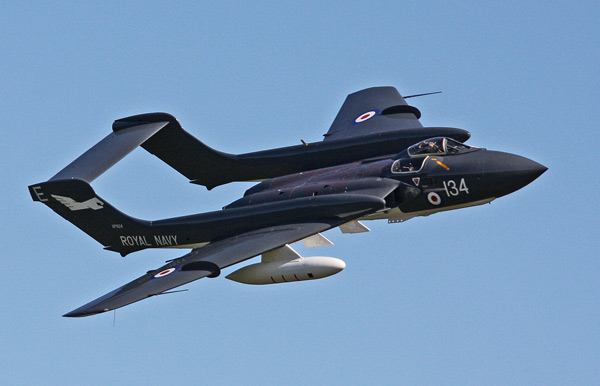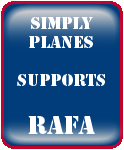de Havilland DH.110 Sea Vixen

de Havilland DH.110 Sea Vixen FAW.2 G-CVIX/XP924/E-134 (cn 10125). Photo by Derek Walker
The de Havilland Sea Vixen is a twin-engine twin boom aircraft powered by Rolls-Royce Avon engines. The two engines enable the Sea Vixen to go supersonic in a dive. Development started in the mid 1940s with the first flight taking place on 26th September 1951, the test pilot being John Cunningham. In 1956 the Sea Vixen made its first arrested deck landing on the aircraft carrier HMS Ark Royal. In 1957 the Sea Vixen FAW.1 took to the skies. On 2nd July 1959 the first Sea Vixen equipped squadron was formed. One of the most notable things about this type of aircraft was the crew configuration, with the observer positioned in the fuselage having access through a flush fitting top hatch. A total of 145 aircraft of various Mks were built, with one aircraft kept in an airworthy condition which is regularly displayed at air shows. There are also a small number of airframes on display at air museums.




